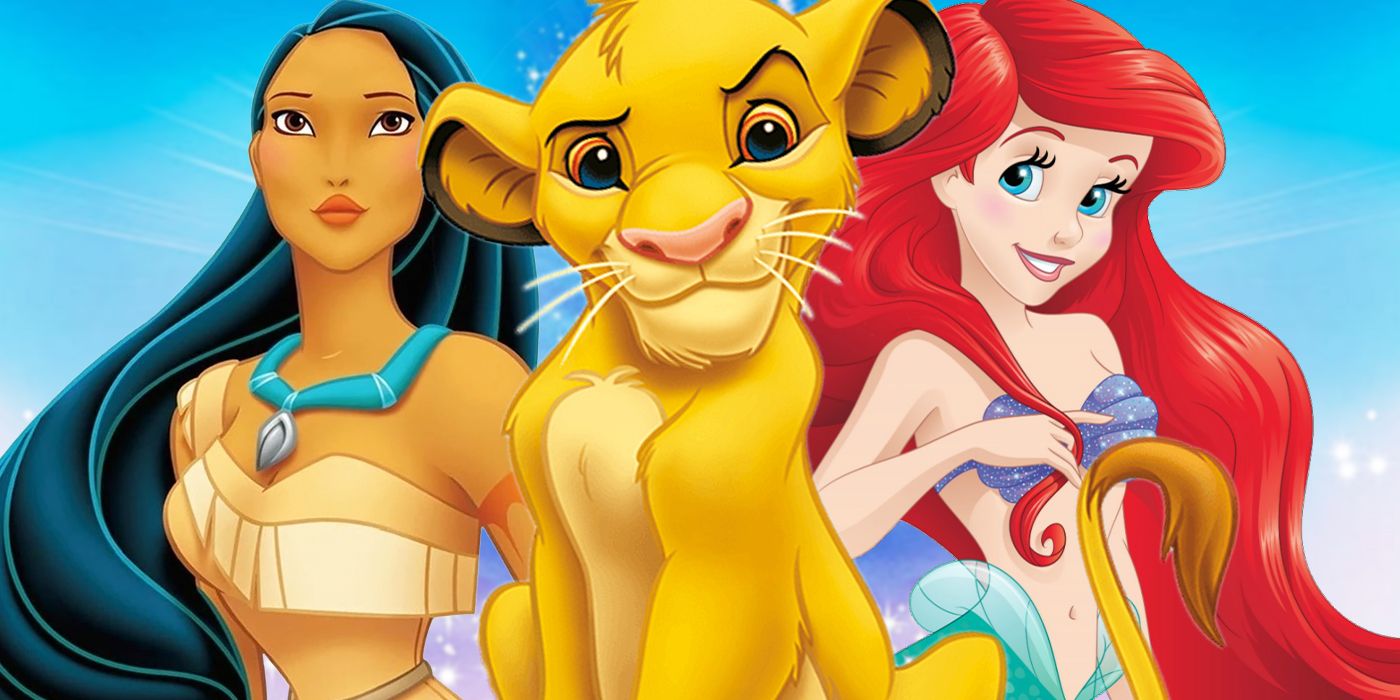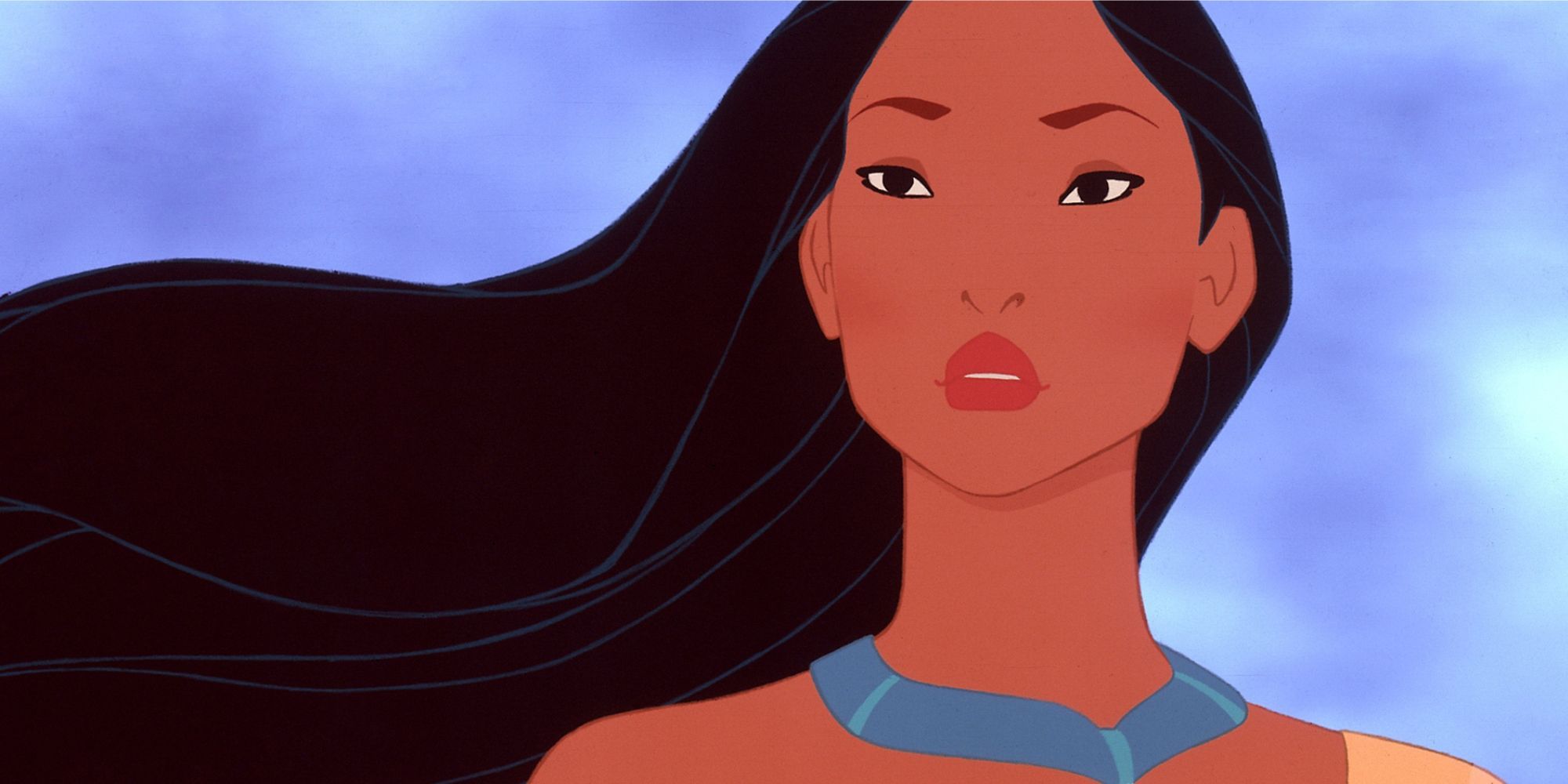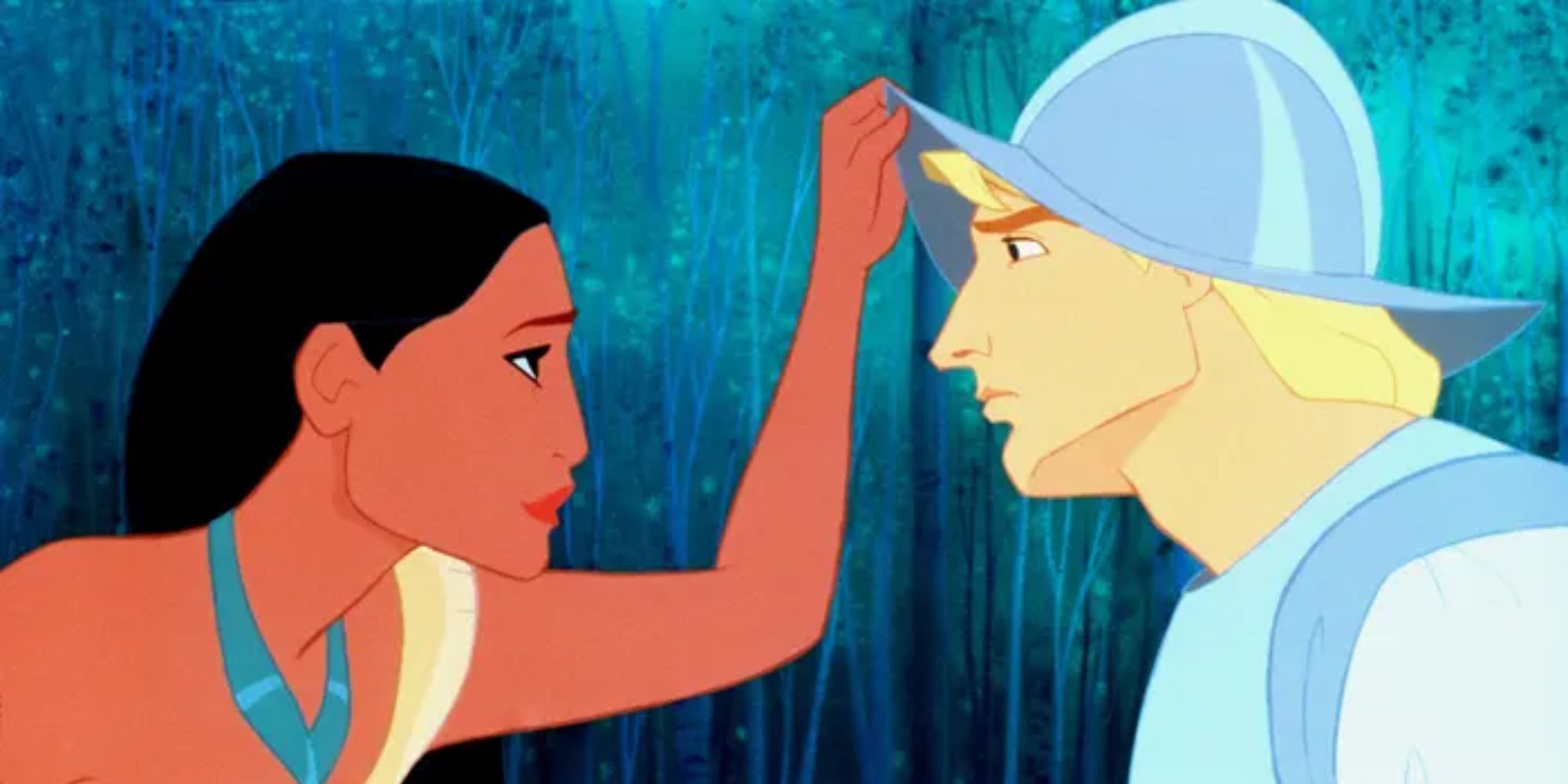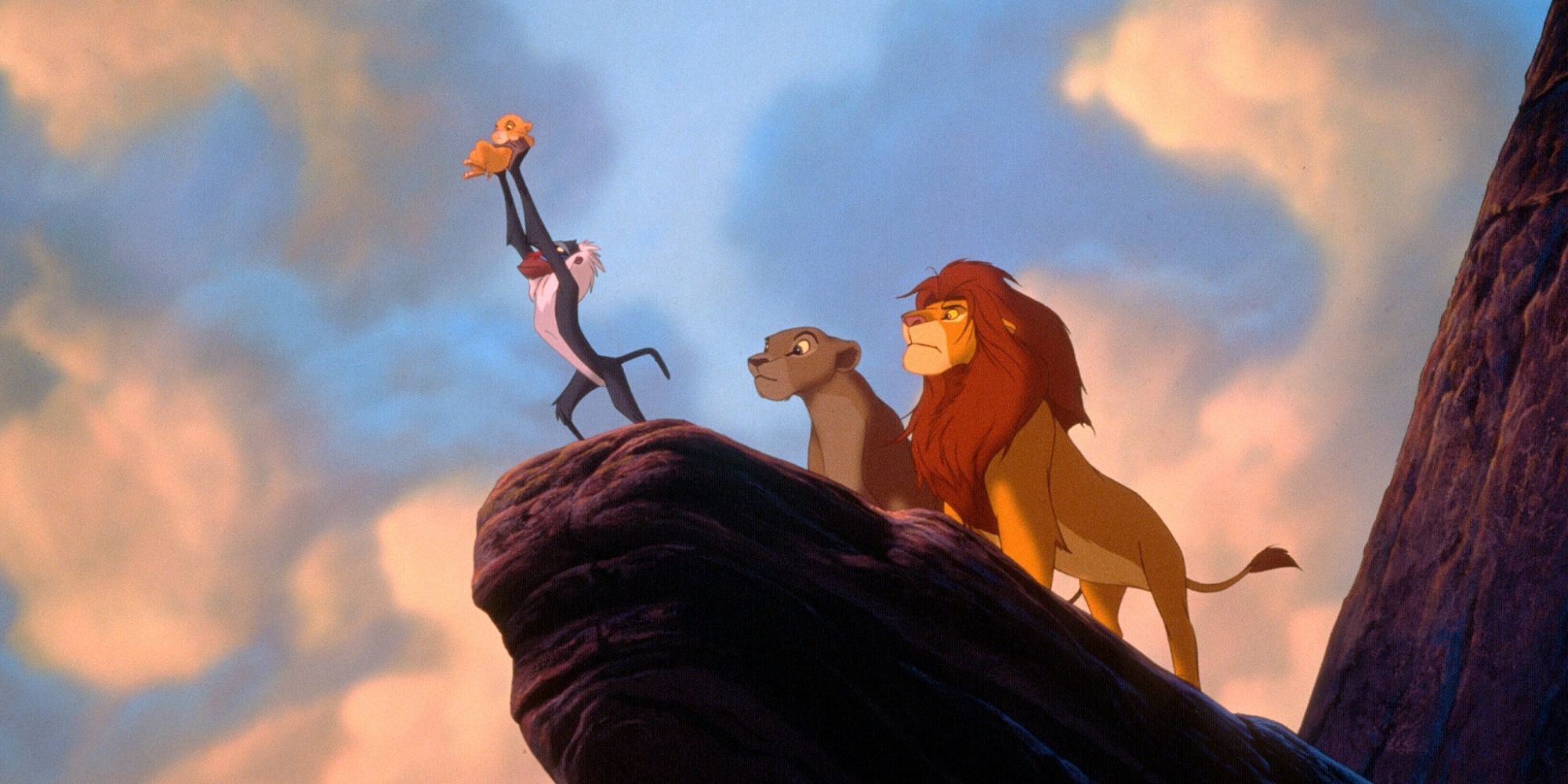The Lion King is Disney nobility — all pun intended. The animated film is one of the most beloved, celebrated, and successful movies Disney has ever produced, becoming one of highest grossing animated films at the time of its release. Its critical acclaim was as notable as its commercial success, taking home two Academy Awards in the process. It has become a fixture in pop culture, spawning a widely cherished Broadway musical, highly underrated sequels, and a live-action remake that earned even more than the original. With such expansive adoration for the movie, it's hard to believe that the Disney team actually had more faith in another film that was being produced at the time: Pocahontas.
Pocahontas and The Lion King were made around the same time and, during this production phase, Disney believed that the former would be the more surefire hit. The Lion King was a wild card — it was an experiment that took bigger risks, which ultimately paid off. These two classic Disney films are both beloved stories in their own right, but the behind-the-scenes peek at the friendly rivalry between animation teams is a fascinating look at the history of these two classics.
'The Lion King' and 'Pocahontas' Were Produced at the Same Time
The Lion KIng and Pocahontas were in production at the same time in the early 1990s, during a time when Jeffrey Katzenberg, the head of Disney Animation, set the goal to produce one animated feature per year. In a 2015 interview with Refinery29, several members of the animation team talked about their experiences working on these two films. In order to reach their yearly goal, the animation team had to be split up into two groups: one going to Pocahontas, which was further in production, and another to The Lion King, which was in such early stages that its title wasn't even finalized.
With the need to divvy up the animation team, artists split up to go to different projects. With Disney continuing to be a competitive environment, animators with more experience and acclaim tended to get first choice on their assignment. Some artists, like Broose Johnson, were specifically requested to work on a project based on their past work experience with other members of the team. Animators would still end up working on both projects in different capacities, so there weren't any hard-line divisions even if each artist worked primarily on one project over the other.
Who Was on Each Animation Team?
Ultimately, both animation teams were full of incredible creatives and some of the most talented artists in the world. However, the depth of experience seemed to skew in favor of Pocahontas over The Lion King. Pocahontas was directed by Mike Gabriel, who had previously directed Rescuers Down Under, and Eric Goldberg, who had just animated the Genie in Aladdin. The songs for Pocahontas were also already recorded and were received quite favorably, so the movie appeared ready and poised for success.
One of the major contributing factors to the air of prestige and excitement around Pocahontas was the involvement of Glen Keane, who was widely seen as the best animator in the world at the time. Aaron Blaise talked about it further in his interview with Refinery29. Blaise was an animator on Pocahontas who also supervised the animation of young Nala in The Lion King, and talked about the aura of importance generated by Keane's involvement with Pocahontas.
“The best animator in the studio at the time was Glen Keane. He’s world-renowned, everybody wanted to work with [him.] At the time, Keane was assigned to Pocahontas. So right off the bat, everyone thought, Well if Keane is on Pocahontas, that must mean that’s the more important film because they’re really using their top dog for that."
There were some hints of bias in favor of Pocahontas over The Lion King, notably stemming from Katzenberg's non-discreet belief that Pocahontas would be a guaranteed hit, while The Lion King was a much riskier endeavor.
The Lion King team, however, was only further motivated to prove themselves. The movie was directed by Rob Minkoff and Roger Allers, who were making their directorial debuts. Though it was their first time in the directors' chairs, the two had previously worked as animators and storyboard artists for films such as The Little Mermaid, The Rescuers Down Under, and Aladdin. Even though this team had less experience on paper compared to Pocahontas, there was no denying their talent and boldness that made their film such an incredible success. Animating animals was seen as less prestigious at the time, but The Lion King would play a major part in changing that narrative. The team was composed of the less experienced animators at Disney, but that just meant that they were eager to demonstrate their talents and skills. But The Lion King was not without some recognizable animators themselves, with Andreas Deja and Ruben Aquino, who were considered top-level animators, also working on the project. The drive and hunger for success from this team definitely contributed to the fantastic and memorable results of their work.
'The Lion King' Experiment Was a Roaring Success
Both films were, nonetheless, commercial successes. However, the colossal size and impact of The Lion King felt unprecedented and utterly surprising for the project that was made by the underdog animation team. The Lion King was different from other major Disney films up to that point, focusing on animals and a largely original story. The film broke precedent as the first animated film Disney produced that was created independently without direct source material. Though the connections to Shakespeare's Hamlet are prevalent and noteworthy, they were not part of the original conceit behind the film. It was once the similarities were noticed that the connections were extended, but the team ultimately wanted to keep the story as original, unique, and fresh as possible.
Collider's team got to interview The Lion King's co-director Rob Minkoff in 2017, where he talked about the creative freedom TLK's team had with regard to experimenting and making unprecedented choices.
"Actually, Jeffrey Katzenberg very famously talked about Pocahontas and Lion King were in production at the same time. He said, 'Pocahontas is West Side Story meets Dances With Wolves.' He said, 'Lion King, on the other hand, is an experiment. So we don't really know.' But the fact that he allowed us to make a movie with no real precedent, with no real formula... Because in Hollywood particularly, people love a formula, right? It's a guidepost. If you understand the rules, it's like, that's what you're supposed to do. Suddenly, if you don't have a formula — everybody wants a formula, but if you don't have it, you really are forced to do something different."
The story of The Lion King bears some parallels to the story behind the film as well. It's a coming-of-age story, with young players making brave choices that ultimately lead to roaring successes. The legacy of The Lion King continues on, with a prequel film titled Mufasa: The Lion King in the works and set to release next year.




